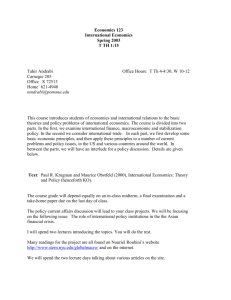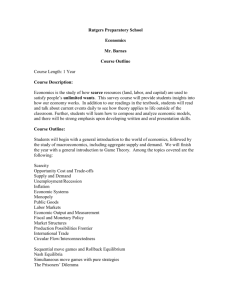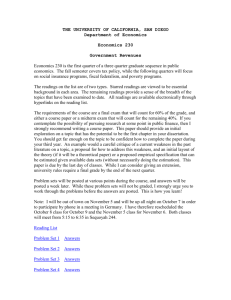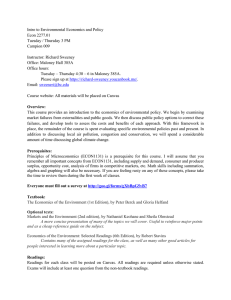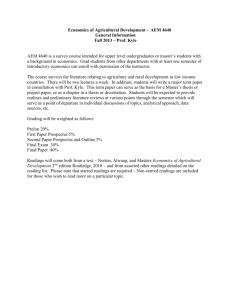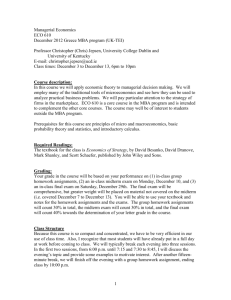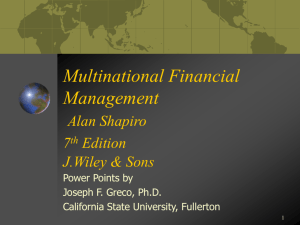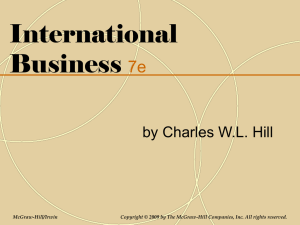International Financial Markets (2942413)
advertisement
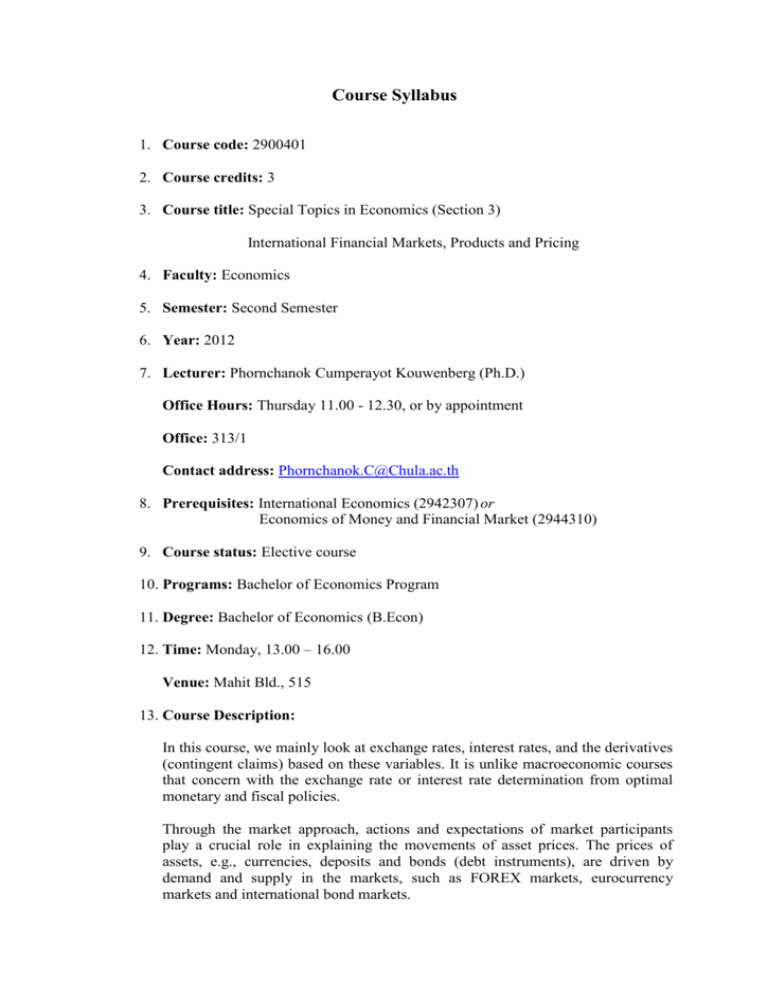
Course Syllabus 1. Course code: 2900401 2. Course credits: 3 3. Course title: Special Topics in Economics (Section 3) International Financial Markets, Products and Pricing 4. Faculty: Economics 5. Semester: Second Semester 6. Year: 2012 7. Lecturer: Phornchanok Cumperayot Kouwenberg (Ph.D.) Office Hours: Thursday 11.00 - 12.30, or by appointment Office: 313/1 Contact address: Phornchanok.C@Chula.ac.th 8. Prerequisites: International Economics (2942307) or Economics of Money and Financial Market (2944310) 9. Course status: Elective course 10. Programs: Bachelor of Economics Program 11. Degree: Bachelor of Economics (B.Econ) 12. Time: Monday, 13.00 – 16.00 Venue: Mahit Bld., 515 13. Course Description: In this course, we mainly look at exchange rates, interest rates, and the derivatives (contingent claims) based on these variables. It is unlike macroeconomic courses that concern with the exchange rate or interest rate determination from optimal monetary and fiscal policies. Through the market approach, actions and expectations of market participants play a crucial role in explaining the movements of asset prices. The prices of assets, e.g., currencies, deposits and bonds (debt instruments), are driven by demand and supply in the markets, such as FOREX markets, eurocurrency markets and international bond markets. A part of the course covers materials that are necessary to know for market participants, from decentralized dealer networks to centralized policy authorities. Another part touches issues that are interesting for academics, like economic principles underlying the determination of asset prices and decision making of economic agents. Applications of the knowledge on financial catastrophes and risk management are also provided. 14. Course Outline: 14.1 Aim of the course: To facilitate trade and investment on a global scale, seemingly distinct domestic financial markets are parts of the integrated international financial markets. This course is designed to provide students with a solid framework for exploring financial markets in an international context. The course is an introduction to relevant topics on international financial markets, primarily for the BA students. Hopefully, the course will convey an intuitive feeling for market dynamics for practitioners and establish background for further studies, as we blend together economic theories and actual behaviours of the international financial markets. 14.2 Course Contents: We will spend time on three main international financial markets Foreign Exchange Markets Eurocurrency Markets International Bond Markets In each of these markets, we try to answer the questions: What are these markets? Why are they relevant? o Who need these markets and for what? How do the markets operate? o Types of Exchange o Market participants o Trading activities Which products are traded in the markets? Hedging and risk management? Implications for monetary and financial stability? 14.3 Teaching Methods: Lecture (70%) Presentation and discussion on assigned readings and cases (30%) 14.4 Learning Outcomes: Practical financial market skills 2 14.5 Media: PowerPoint presentation and Websites 14.6 Evaluation: Midterm examination: 30% Final examination: 40% Presentation and discussion: 30% 14.7 Course Schedule: Table 1: Midterm Date Course Contents International Financial Markets 29/10/12 Broad view on the international financial markets Prices and Price creation in the financial markets 5/11/12 Financial catastrophes 12/11/12 No Class FOREX Markets 19/11/12 Market structure, Characteristics, and Participants Terminology in FX markets 26/11/12 Invited Speaker: What do FX dealers do? 3/12/12 Trading activities 10/12/12 No Class 17/12/12 No Class Midterm Exam 3 Table 2: Final Date 31/12/12 Course Contents No Class FOREX Products 7/1/13 14/1/13 Spot transaction Forward transaction FX swaps No Class 21/1/13 Currency swaps Currency futures Currency options 28/1/13 Case studies 4/2/13 Case studies Offshore Financial Markets 11/2/13 Eurocurrency and International bond markets Sat. 16/2/13 (9-12) Invited Speaker: What do money market dealers do? Sat. 16/2/13 (13-16) Invited Speaker: Debt markets and Instruments 18/2/13 Interest rate determination and Derivatives Final Exam 4 15. Readings: Below is a list of references (mainly books) used in this course. There is no single recommended reading material for this course. A tip is to follow the course handouts, to understand main concepts (from any books you feel comfortable with) and to be able to practically apply the materials. 15.1 Compulsory Reading: Handouts 15.2 Optional Readings: 15.2.1 Cross, S.Y., 1998, All About the Foreign Exchange Market in the United States, the Federal Reserve Bank of New York. 15.2.2 Grabbe, J., International Financial Markets. 15.2.3 Levi, M., International Finance: The Markets and Financial Management of Multinational Business. 15.2.4 Levich, R., International Financial Markets: Prices and Policies. 15.2.5 Madura, J., Financial Institutions and Markets. 15.3 Other Sources: Websites http://www.google.com http://www.ssrn.com http://www.imf.org/external http://www.ecb.int/ http://www.investopedia.com 5
